Solana Blockchain - Crypto Academy / S4W4 - Homework Post For @pelon53.
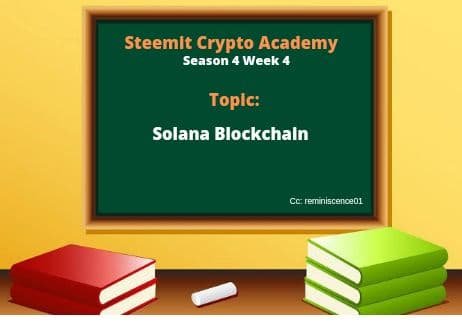
Hello Steemians, I pray you all to have the best of days in the rest of the weeks. The lesson by @pelon53 on Solona Blockchain was detailed and interesting as it showcased the key features of the Solana Blockchain. I will be doing the homework task from the lesson.

Question 1: Explain in detail the PoH of Solana.

Proof Of History Of Solana
Solana is an open-source, hybrid, decentralized blockchain that works on the proof of stake and proof of history protocol along with other technologies to verify transactions. Considered one of the fastest blockchains as it can process up to 50,000 transactions per second.
Solana is a third-generation blockchain built to solve the issues of transaction speed and scalability issues experienced by other blockchains like bitcoin. The Solana blockchain also supports Smart contract and Non-Fungible Tokens.
Proof of History, also known as a clock for blockchain, is a consensus algorithm used on the Solana Blockchain that uses timestamps and transaction records in verifying blocks. This guarantees that transaction data was created before the block was verified or the next hash was generated.
Solana implements the proof of history in verifying transaction data. In the Solana blockchain, blocks are timestamped by the Leader Nodes with a cryptographic proof (SHA256 hash), proving that time has passed since the last proof. This shows that all transactions have occurred before the previous timestamp.
The leader nodes then share the new timestamped block to the Validator Nodes. The validator nodes then verify the cryptographic hash on the block. In the Solana blockchain, validator nodes confirm Entries (blocks broken into batches) instead of one single block, and these entries are sent to the validator node in no particular order. This is possible because of the synchronization guarantee given by the proof of history.
The Solana Blockchain uses proof of history to verify transactions. The leader nodes share blocks, timestamps with proof to the validator nodes to confirm them in entries before the nodes can vote on the validity of the transactions; this helps the Solana blockchain be faster and more scalable.

Question 2: Explain at least 2 cases of use of Solana

Solana supports smart contracts and non-fungible tokens. Over 300 DApps have been built on the Solana blockchains, and I will be giving details on 2 of them.
Orca
Orca is a decentralized exchange (DEX) platform built on the Solana Smart Contract platform. This project was the first cryptocurrency project built on the Solana blockchain, tagged to be the most user-friendly DEX on the Solana blockchain. Founded by Grace Kwan and team and was launched in February 2021.
Orca was a receiver of an $18 million Series A grant to use in developing an AMM (Automated Market Maker).
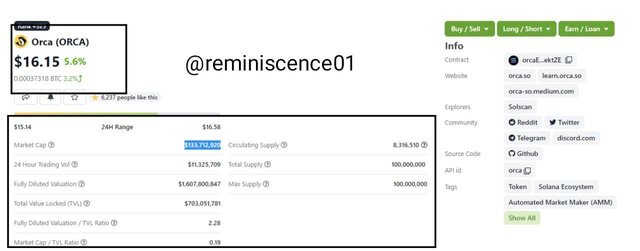
The Orca DEX platform has a token called ORCA. The ORCA token is priced at $16.15 as of this writing, with a market cap at $133,712,920 fully diluted market cap at $1.607B as shown above. Tradable on different exchange sites like gate.io, MEXCglobal, and the ORCA swap platform.
On the Orca platform homepage, you get to see a swap box that allows the swap/exchange of coins and tokens.
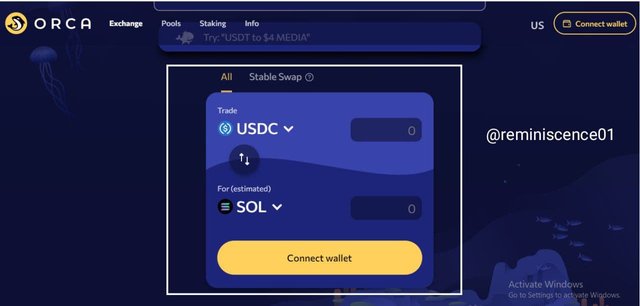
The Orca platform offers other features like pools and staking.
Anchor
Anchor, a project built on the Solana blockchain, is a savings platform. Anchor offers convenient and straightforward saving products suitable for everyone. In addition, the anchor project allows the deposit into the platform and rewards depositors with a low volatility interest rate.
Anchor also allows for instant withdrawal of funds. Furthermore, to reward depositors and generate yield, the anchor allows for borrowing of the deposits by borrowers who give liquid staked proof of stake as collateral (bAssets).
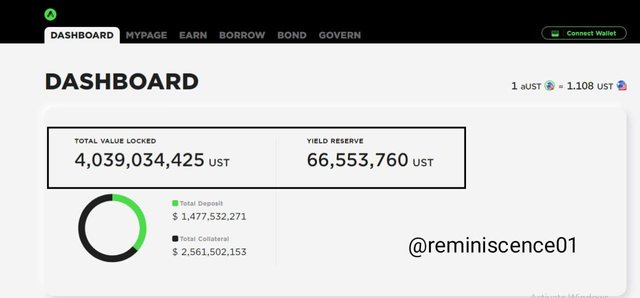
The Anchor platform uses a base currency called UST, and it has over 4 billion UST locked and over 66.5 million UST as yield as shown above.
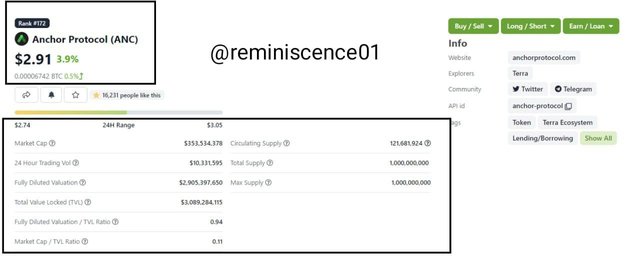
Anchor protocol has a token ANC priced at $2.91 with a market capitalization of $355million as given by coingecko

Detail and Explain the SOLA Token

SOLA Token
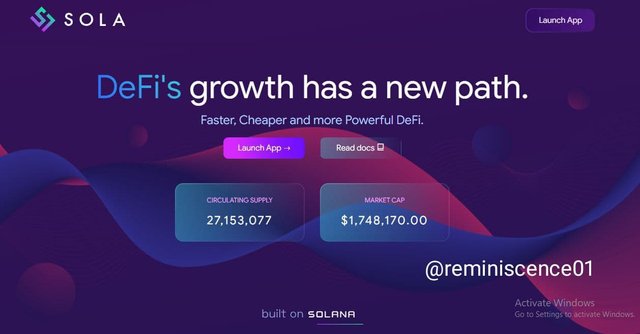
SOLA token is the native token of the Solana blockchain built DEX platform SOLA. This is a DEX and CEX platform that provides efficient assets management and liquidity distribution. In addition, SOLA Token is a high-performance, quick and cheap exchange platform that allows for exchanging all Solana blockchain token stablecoins like the USDT.
The SOLA Token roadmap shows plans of launching DEX for crypto trading, lottery platform, Token swapping, etc., in the 4th quarter of 2021. there's also a plan for an IDO and an NFT creation platform for the 1st and 2nd quarters of 2022.
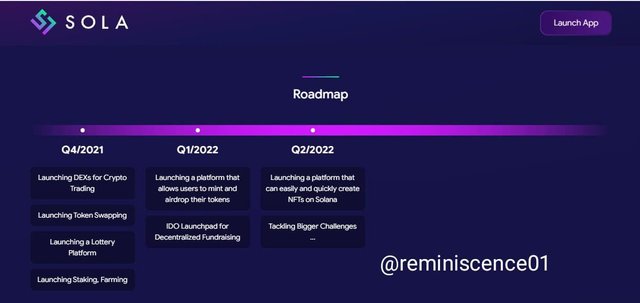
The SOLA Token is priced at $0.058 as of this writing, with a market capitalization of $1,575,378, and circulating supply at $27,153,077.


Question 6: When did Solana Blockchain see its operations interrupted, and why? Explain.

The downtime happened on 14th September 2021. The downtime was due to a system breakdown due to exhaustion as the Solana blockchain experienced a load of 400,000 transactions per second. As a result, the system was down for over 17 hours and locked over $11 billion of investors' assets.
The downtime experienced by the Solana blockchain saw the SOL price dip by over 5%. Solana gave an official statement after the downtime and attributed the cause of the system breakdown to a denial-of-service attack.
Solana Founder Anatoly Yakovenko said that the attacks resulted from bot trading as part of Grape protocol token offering. Trades used the bots to trade to aid in manipulating the grape protocol token offering, which led to a memory overflow of the blockchain.
The Solana team restarted the system after 18 hours, which they initially thought would take a couple of minutes. This was because every attempt to correct the issue was unsuccessful until a hard-fork was done, prompting 80% stakes to reach a consensus. Also, engineers all over the world had to write code to restore the system. No funds were lost, and the network was returned to full functionality.
The Solana official Report can be read on the Solana site using this link solana.com

Question 5: Check the last block generated in Solana and make an approximate calculation of how many blocks per second have been generated in Solana, taking into account from the initial block to the current one? Justify your answer and show screenshots.

To check the last block from the Solana blockchain, I will have to visit the Solana block explorer site, as shown below.
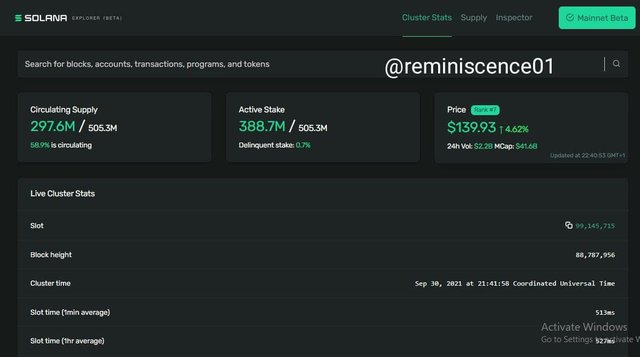
The last block as of this writing was block number 99,146,652 and the block hash was given as 6hQBTv4YfStgKGLSEL6RJKRkXhYdGPqe8PDPdN74GGKo and the block was timestamped on September 30, 2021 at 22;50:04 GMT+1. The block had 1013 processed transactions and 334 successful transactions, as shown below.
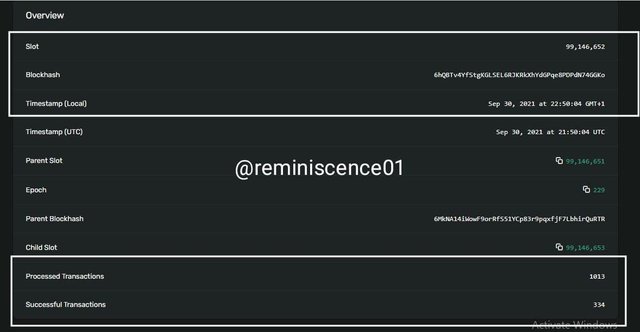
Knowing the last block number and the timestamped, it is easy to know how many blocks are verified per second on average. This is done by looking at the first block on the Solana blockchain and its timestamp.
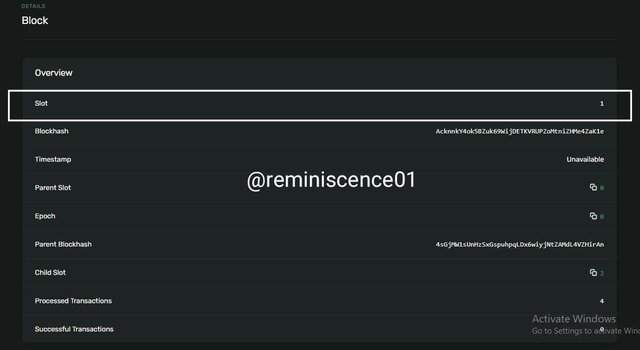
The block 1 blockhash is given as AcknnkY4ok5BZuk69WijDETKVRUPZoMtniZHMe4ZaK1e as shown above and the timestamped is given as March 16, 2020 at 15:30:51as shown below.
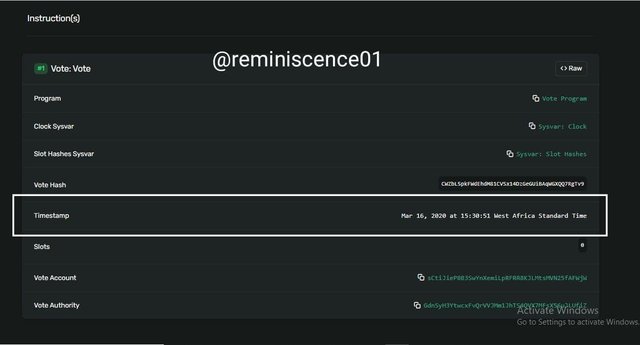
To calculate the blocks per second, first, we calculate how many days and seconds have been spent from the first block to the last block (as of this writing).
From Mar 16, 2020 time 15:30:51 to Sept 20, 2021 time 22;50:04 is calculated to be 563 days 26,353 seconds. converting days to seconds and adding up the seconds is calculated as
563 x 24 hours in a day x 60 minutes in an hour x 60 seconds in a minute + 26,353 seconds = 48,669,553 seconds
Since the total seconds spent from block 1 to block 99,146,652 has been calculated to be 48,669,553 seconds
Blocks Per Seconds = 99,146,652 / 48,669,553 = 2.037 blocks per seconds approximately 0.5seconds per block.

Conclusion

Solana blockchain is a permissionless, hybrid blockchain that verifies transactions using the proof of stake and history consensus algorithm. Considered the fastest blockchain has it averages two blocks verification per second.
The Solana blockchain solves the issue of transaction speed and scalability plaguing other blockchains. In addition, Solana Blockchain supports smart contracts and the creation of dapps like DEX platforms, Defi platforms, Games, and NFTs.
Thank you @pelon53 for this amazing lesson.
You've got a free upvote from witness fuli.
Peace & Love!
Gracias por participar en Steemit Crypto Academy Season 4, Semana 4:
👆 Eso es lo que se necesitaba contestar. Muy bien.
Calificación: 10.0
Thank you @pelon53.